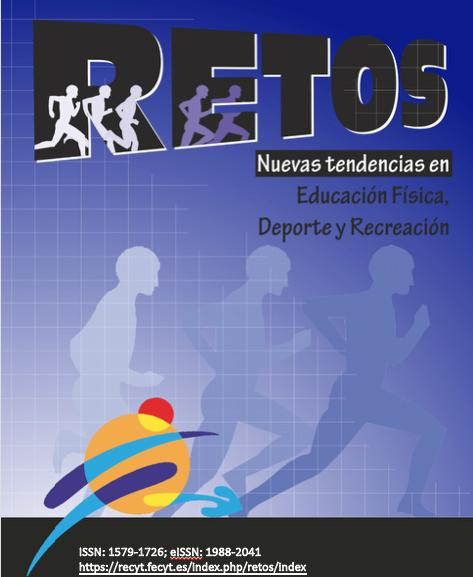Gender Gaps in sports in Guayas: realities, challenges, and equity in female representation in sports organizations
DOI:
https://doi.org/10.47197/retos.v68.114221Keywords:
Equality, equity, gender, organizations, sportsAbstract
Introduction: The present study examined gender equity in sports organizations in the province of Guayas, Ecuador. It analyzed organizational structure, normative knowledge, and the perception of equality within the sporting field.
Objective: The objective was to identify and analyze gender disparities in sports organizations, evaluating the influence of female representation in management and the focus of sports activities on the perception of equity.
Methodology: A quantitative, non-experimental, cross-sectional, descriptive-correlational design was employed. Structured questionnaires were administered to 125 sports organizations, selected from an initial population of 150 through rigorous inclusion criteria (active status, updated contact information, a minimum of 20 registered athletes, and unique records) and exclusion criteria (inactivity, incomplete or duplicate data). Data analysis was performed using descriptive statistics, the Mann-Whitney U test, Spearman’s correlation coefficient, and multiple linear regression.
Results: The results revealed that organizations with higher female representation in management achieved a significantly higher perception of equity (mean score of 4.56 versus 3.97; p = 0.003). A moderate positive correlation (r = 0.45, p < 0.01) was observed between normative knowledge and the perception of equality. Moreover, multiple regression analysis indicated that female representation and the focus on recreational activities were significant predictors, explaining 42% of the variance in equity perception.
Discuss: The findings were consistent with previous studies showing that female leadership and a recreational activity focus contribute to more inclusive environments.
Conclusions: The study concluded that gender equity in sports is primarily influenced by organizational structure and the activity focus.
References
Aguirre, A. (2025). Brecha de género en los deportes colectivos: revisión sistemática desde el fútbol. GADE: Revista Científica, 5(1), 177-202. https://revista.redgade.com/index.php/Gade/article/view/569
Barcia, A., Mayanza, O., Vásquez, E., y Morejón, S. (2024). La equidad de género en las organizaciones deportivas ecuatorianas. Retos, 55, 915–921. https://doi.org/10.47197/retos.v55.106038
Copello, R. (2022). Técnicas y métodos en la investigación social. Revista de Metodología de la Investigación, 29(1), 45–62.
Cruz, K., Muñoz, H., Ríos, J., Guimaraes, A., Mataruna, L., y Reynoso, L. (2022). Factores que influyen sobre las actitudes hacia la participación de la mujer en el deporte. Sportis Sci J, 8 (3), 396-413 https://doi.org/10.17979/sportis.2022.8.3.9077
Donoso, B., Reina, A., y Álvarez, A. (2023). Desigualdad de género en el deporte de competición: voces y reflexiones. Retos, 47, 557–564. https://doi.org/10.47197/retos.v47.93006
Flores, Z., Chávez, B., Mier, R., y Obregón, C. (2022). Violencia de género en el deporte. Retos, 43. Pp. 808 – 817. https://dialnet.unirioja.es/servlet/articulo?codigo=8072004
Hall, J., y Ochoa, J. (2023). Brecha de género en la participación de tareas motrices de educación física. Retos, 48. Pp. 298 – 303. https://dialnet.unirioja.es/servlet/articulo?codigo=8800142
Hamodi, C., y Álvaro, L. (2023). El género y su transversalización en la educación (formal y no formal), en la familia y en el deporte. Dykinson.
Hernández-Sampieri, R., Fernández, C., & Baptista, P. (2014). Metodología de la investigación (6ª ed.). McGraw-Hill.
Jiménez, A., Báez, G., Fuentes, J., Ramírez, L., y Katz, Y. (2022). “Luchando por un sueño” El deporte como vía a la igualdad de género. (Trabajo de pregrado, Universidad Nacional Abierta y a Distancia UNAD) https://repository.unad.edu.co/bitstream/handle/10596/54012/ajjimenezgu.pdf?sequence=1&isAllowed=y
López, A., y Estrada, N. (2021). Percepción de estereotipos de género asociados al deporte, la educación física y las actividades de fitness en estudiantes aragoneses de secundaria. (Trabajo de Maestría, Universidad de Zaragoza) https://zaguan.unizar.es/record/107493/files/TAZ-TFM-2021-435.pdf
López, M., y Pardo, A. (2021). ¿Existen los estereotipos de género en la actividad física y el deporte en una muestra de adolescentes de Barcelona? Revista Española De Educación Física Y Deportes, (434), 56–65. https://doi.org/10.55166/reefd.vi434.998
Maldonado, J. (2020). Metodología de la investigación social: paradigmas, métodos y técnicas. Ediciones de la U.
Mujika, A., García, I., y Gibaja, J. (2024). Estereotipos sobre género del deporte entre la población guipuzcoana. Retos, 51, 1226–1233. https://doi.org/10.47197/retos.v51.100822
Martínez, N., Dueña, S., y Cuenca, N. (2024). Del barrio al estadio: fútbol, género y clase en la serie documental Un sueño Real (HBO: 2020–2022). Retos, 55, 27–34. https://doi.org/10.47197/retos.v55.103525
ONU Mujeres Ecuador. (2020). Protocolo de actuación frente a casos de violencia de género en el sistema deportivo del Ecuador. https://acortar.link/d4T5rp
Pérez, M. (2020). Aspectos regulatorios de la cuestión de género en el deporte. Estudios de Deusto, 68(2). Pp. 205 – 230. https://dialnet.unirioja.es/servlet/articulo?codigo=7692055
Santos, J. (2021). En búsqueda del oro femenino: la equidad de género en el deporte elite en Colombia a través de la historia. (Universidad de Los Andes). https://repositorio.uniandes.edu.co/entities/publication/b101a65f-dacb-4420-a450-3cfff75cc16c
Sauleda, L., Gavilán, D., & Martínez, J. (2021). The gender gap in sport: The case of a historically and socially accepted marginalization. Interdisciplinaria, 38(2), 73-86. https://dx.doi.org/10.16888/interd.2021.38.2.5
Downloads
Published
Issue
Section
License
Copyright (c) 2025 Ariana Katherine Galarza Quinto, José Vladimir Fierro, María Elena Nicola Freire, Yuliana Pamela Clavijo Orozco

This work is licensed under a Creative Commons Attribution-NonCommercial-NoDerivatives 4.0 International License.
Authors who publish with this journal agree to the following terms:
- Authors retain copyright and ensure the magazine the right to be the first publication of the work as licensed under a Creative Commons Attribution License that allows others to share the work with an acknowledgment of authorship of the work and the initial publication in this magazine.
- Authors can establish separate additional agreements for non-exclusive distribution of the version of the work published in the journal (eg, to an institutional repository or publish it in a book), with an acknowledgment of its initial publication in this journal.
- Is allowed and authors are encouraged to disseminate their work electronically (eg, in institutional repositories or on their own website) prior to and during the submission process, as it can lead to productive exchanges, as well as to a subpoena more Early and more of published work (See The Effect of Open Access) (in English).
This journal provides immediate open access to its content (BOAI, http://legacy.earlham.edu/~peters/fos/boaifaq.htm#openaccess) on the principle that making research freely available to the public supports a greater global exchange of knowledge. The authors may download the papers from the journal website, or will be provided with the PDF version of the article via e-mail.


